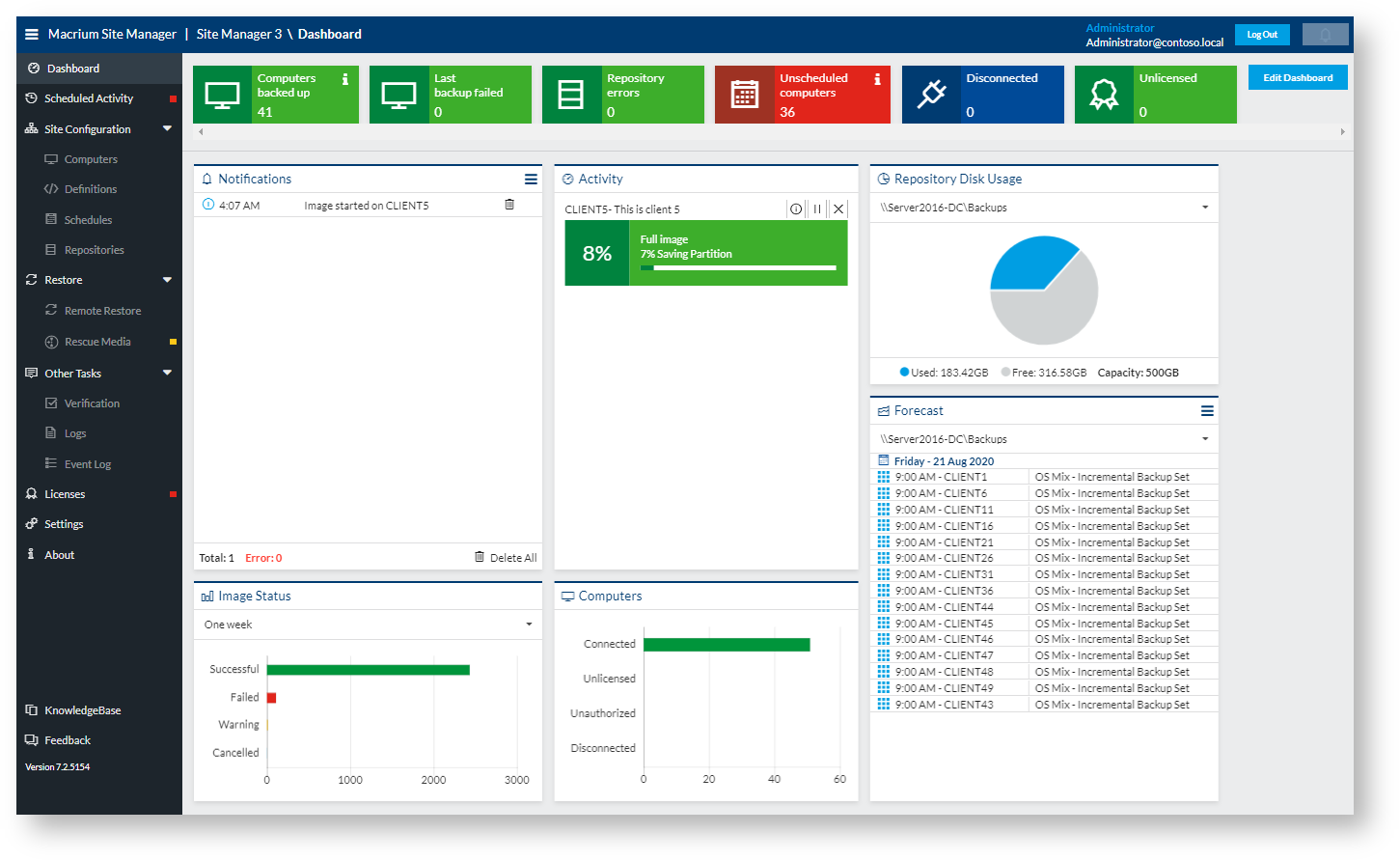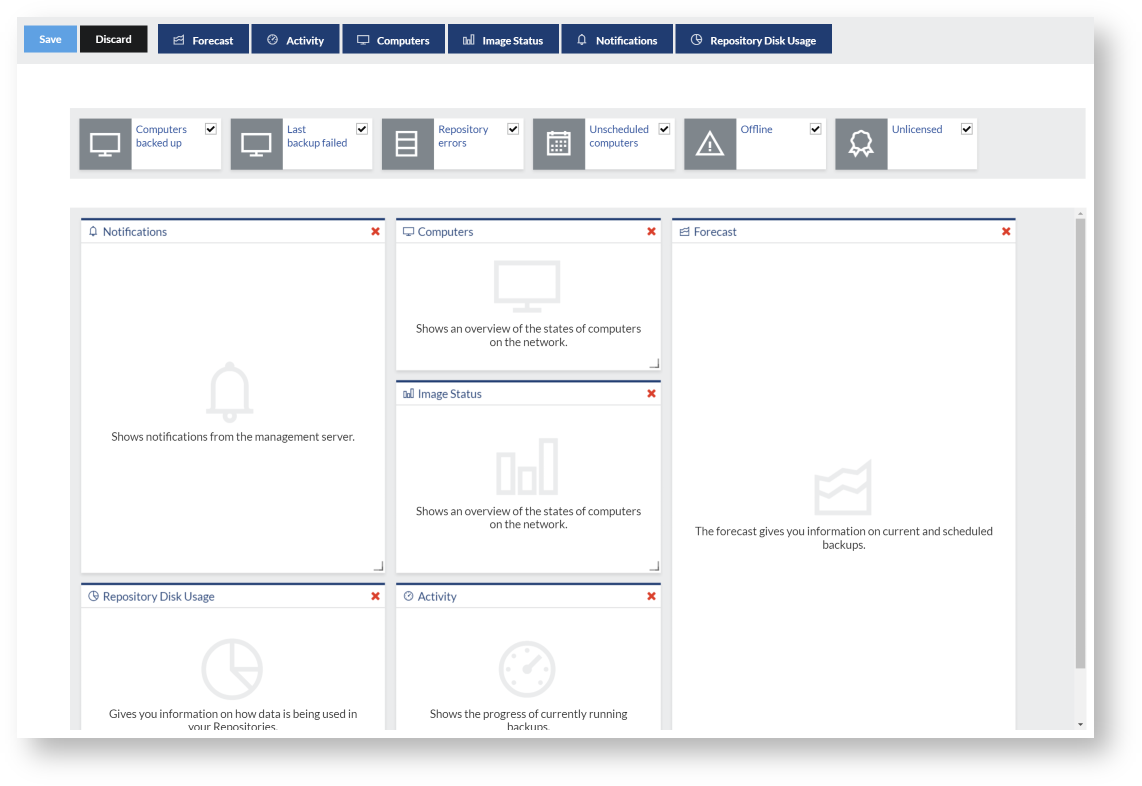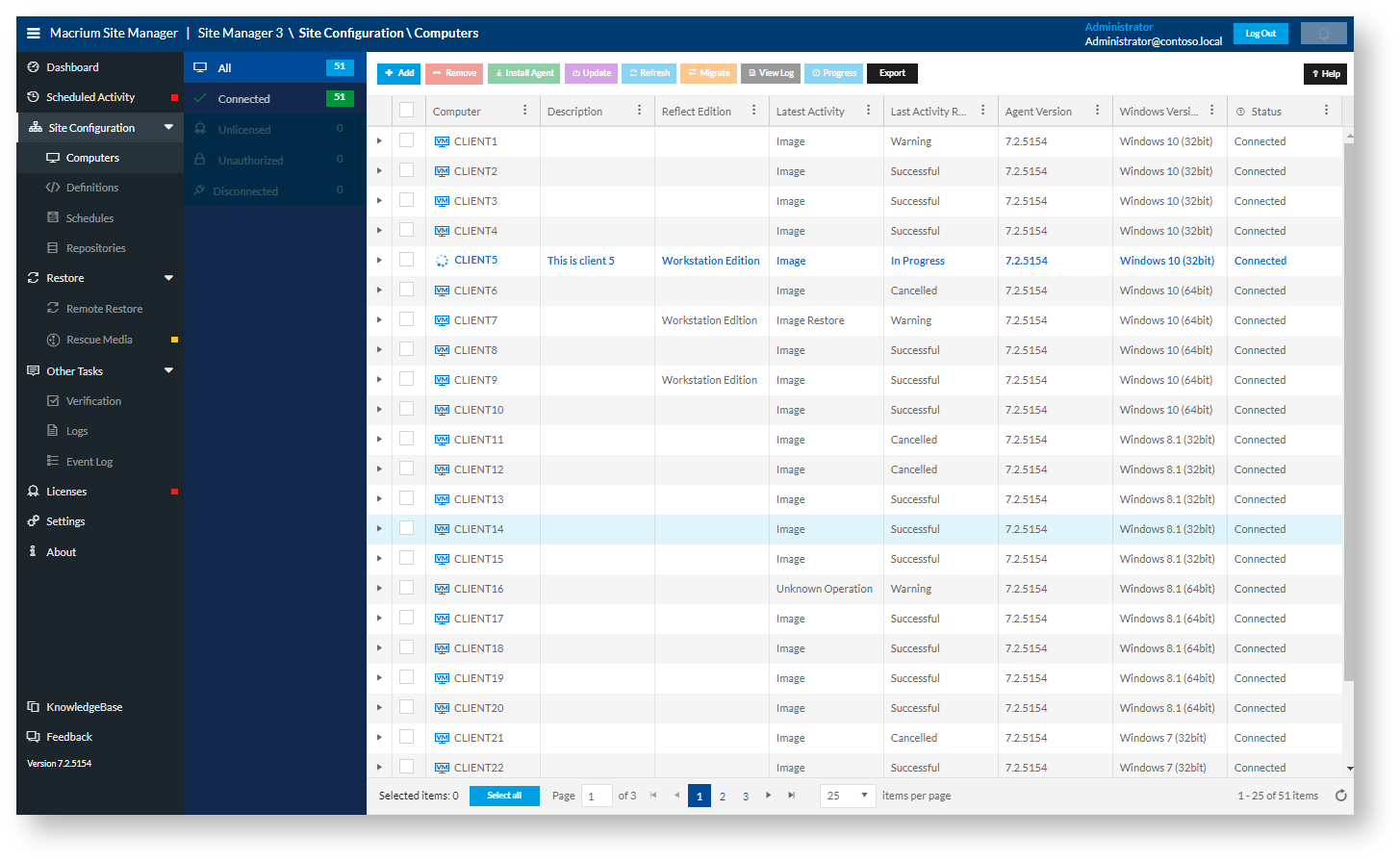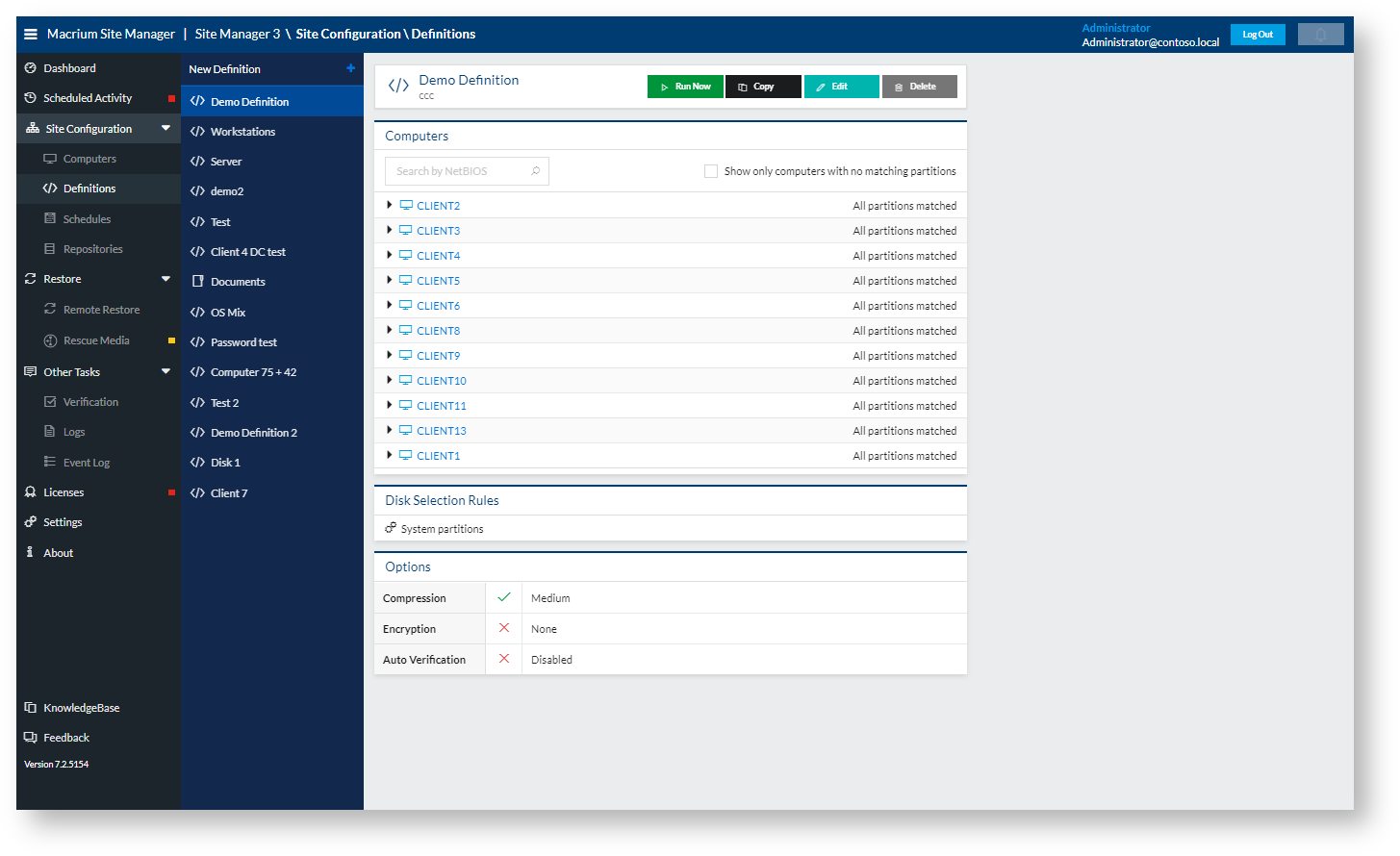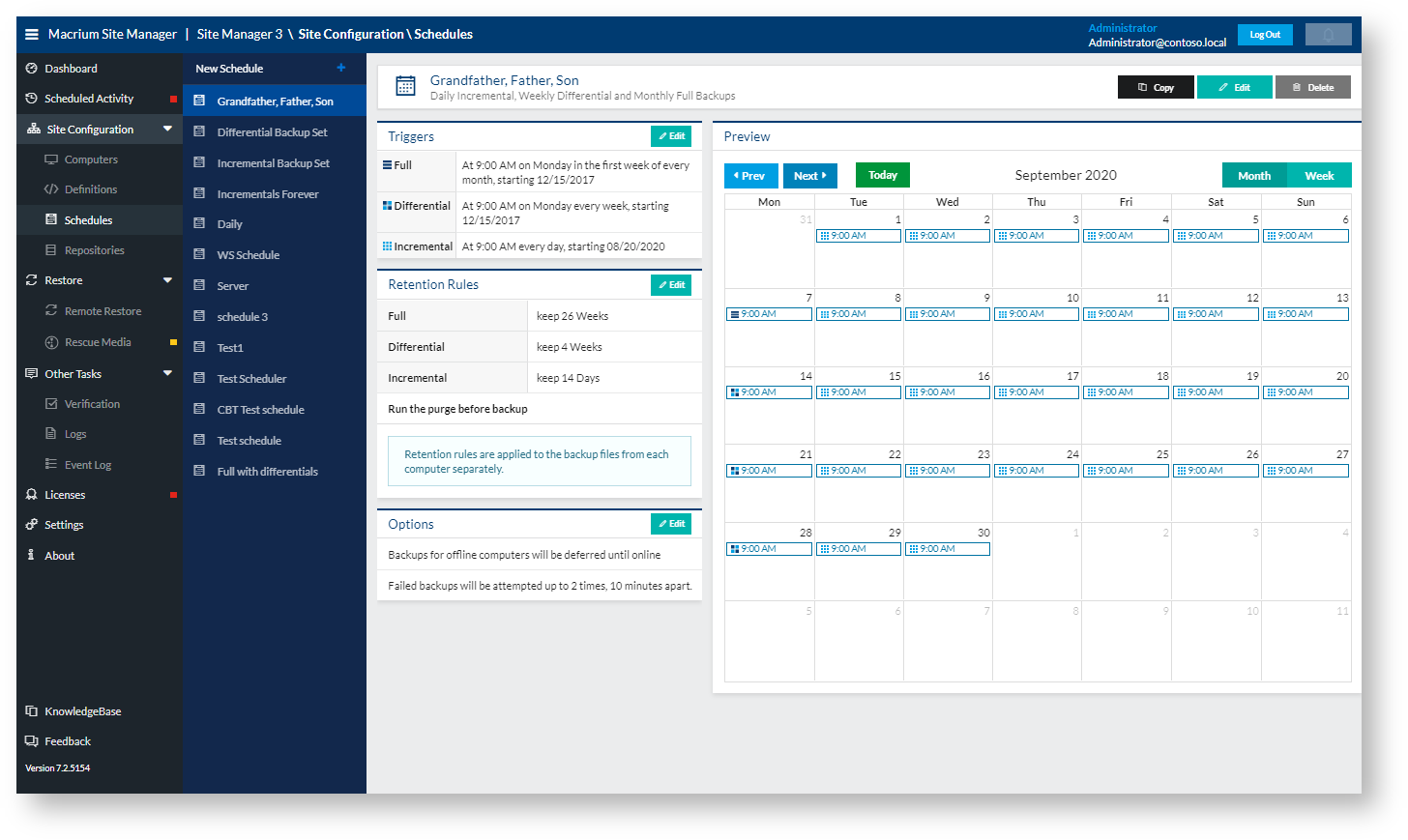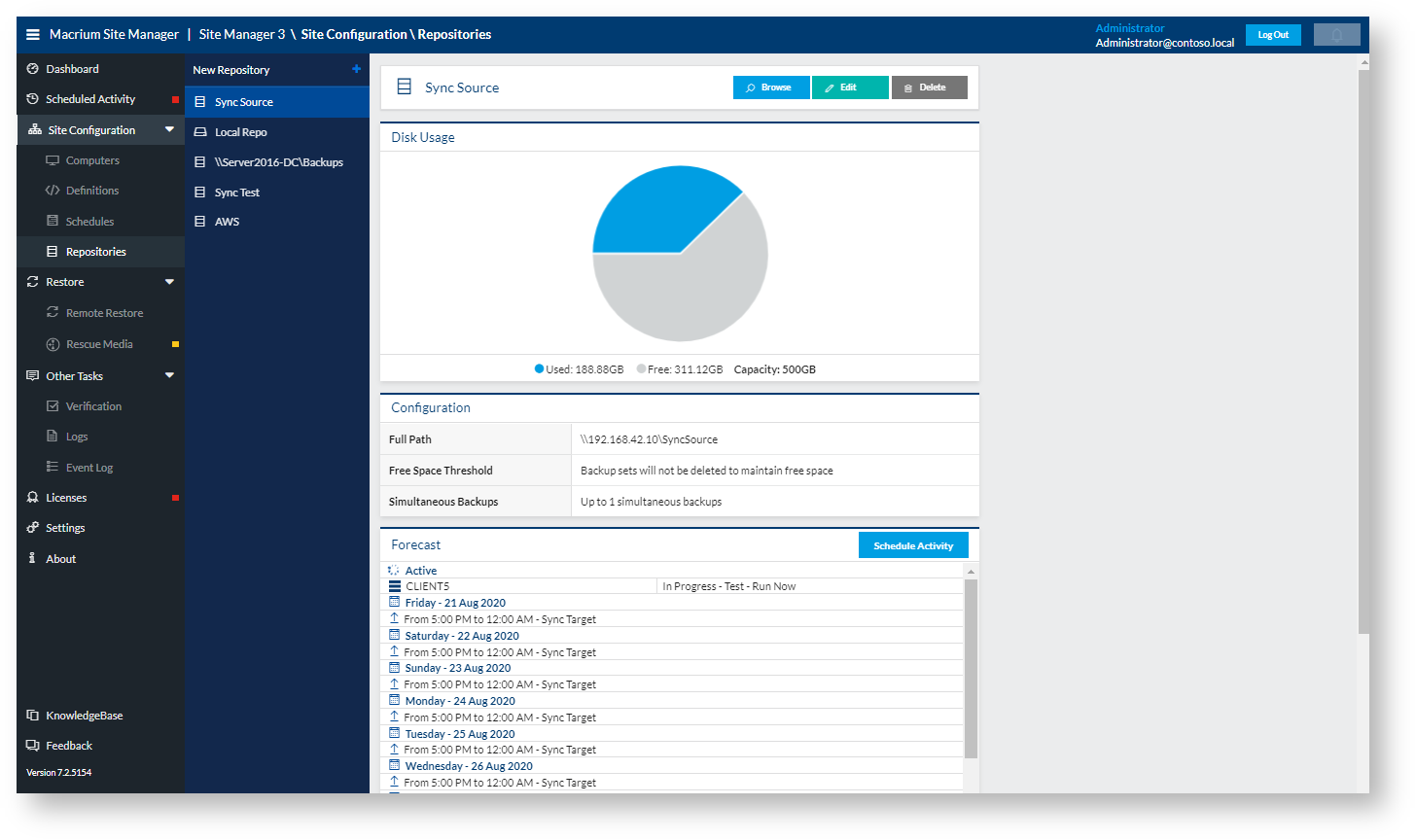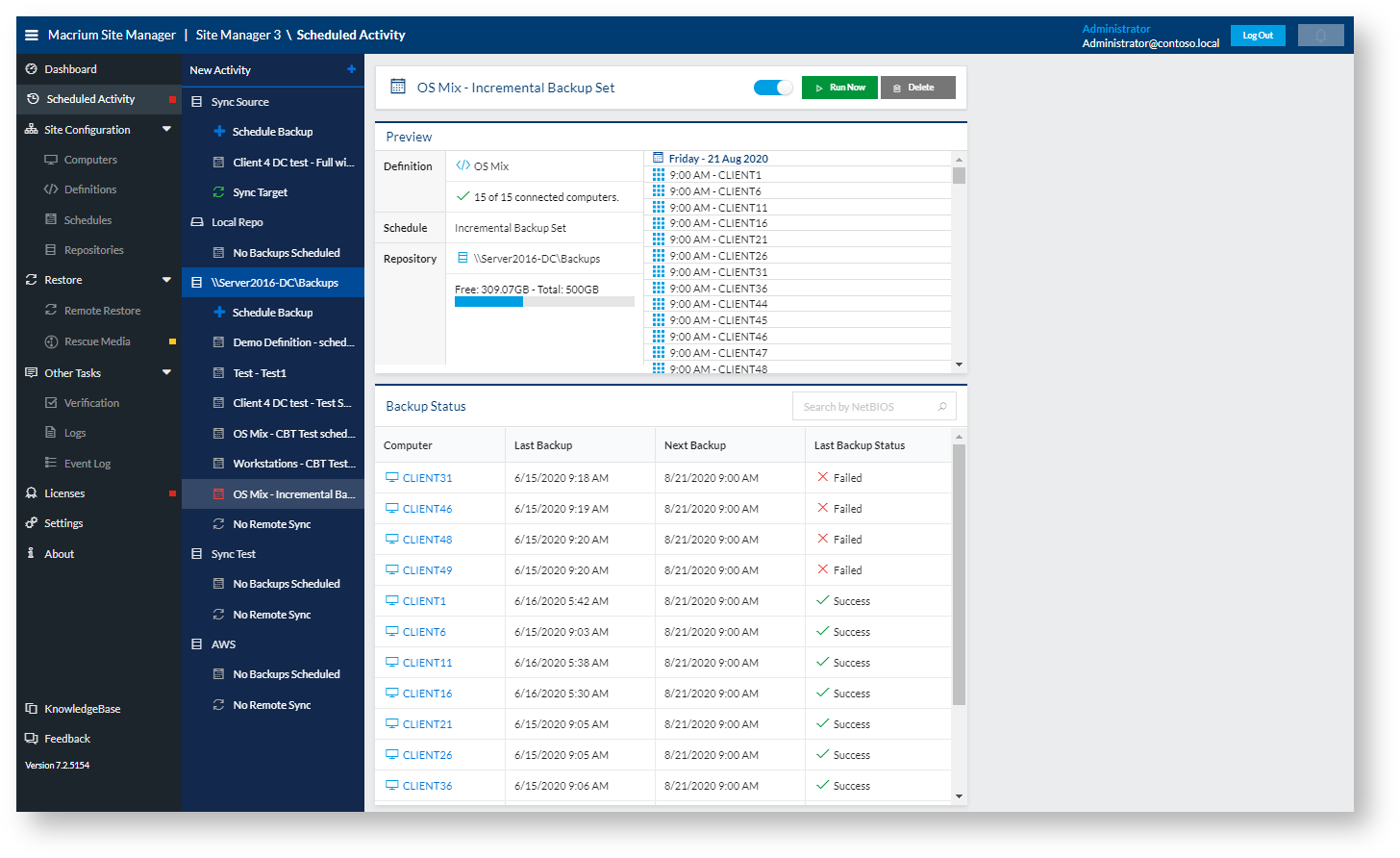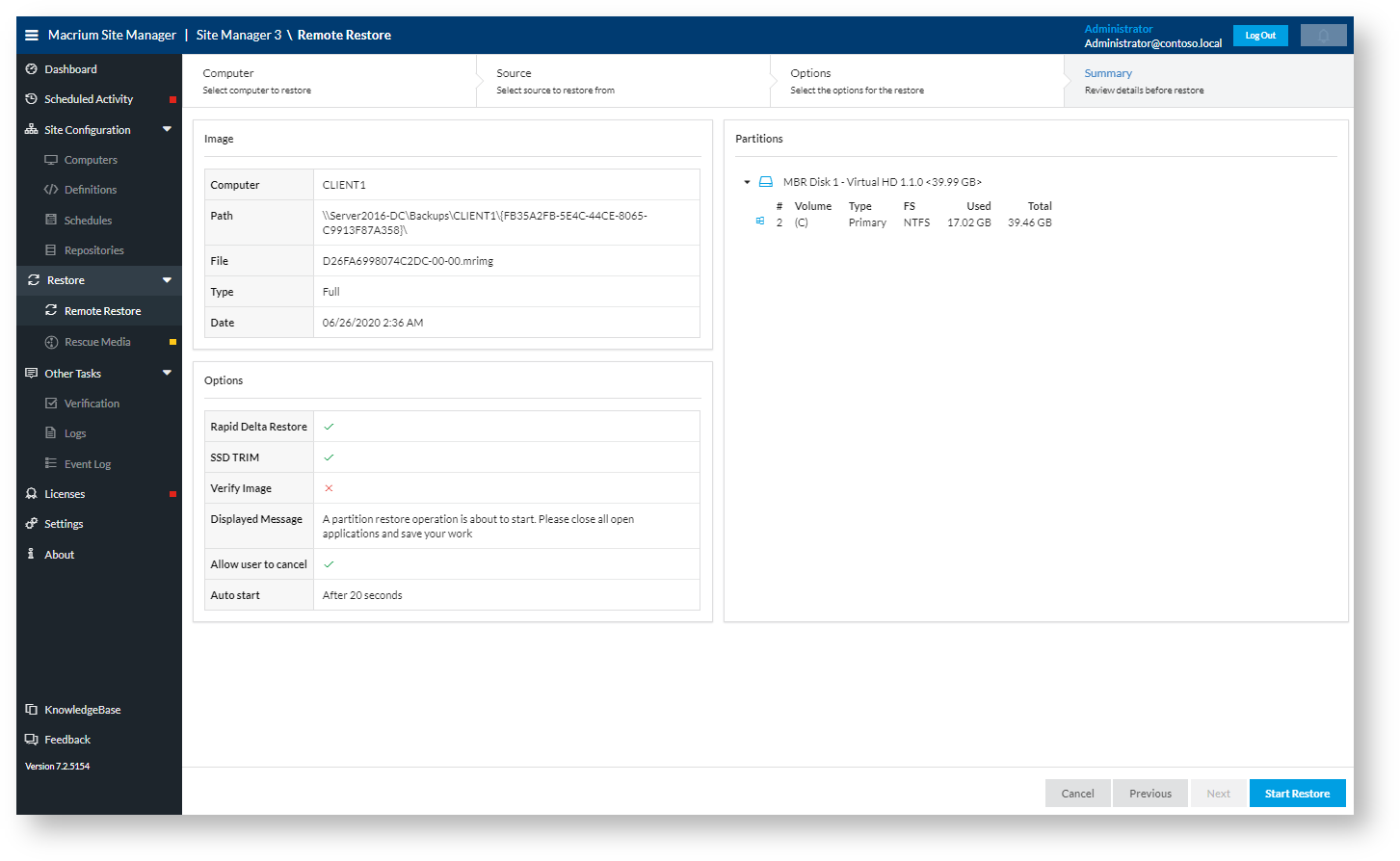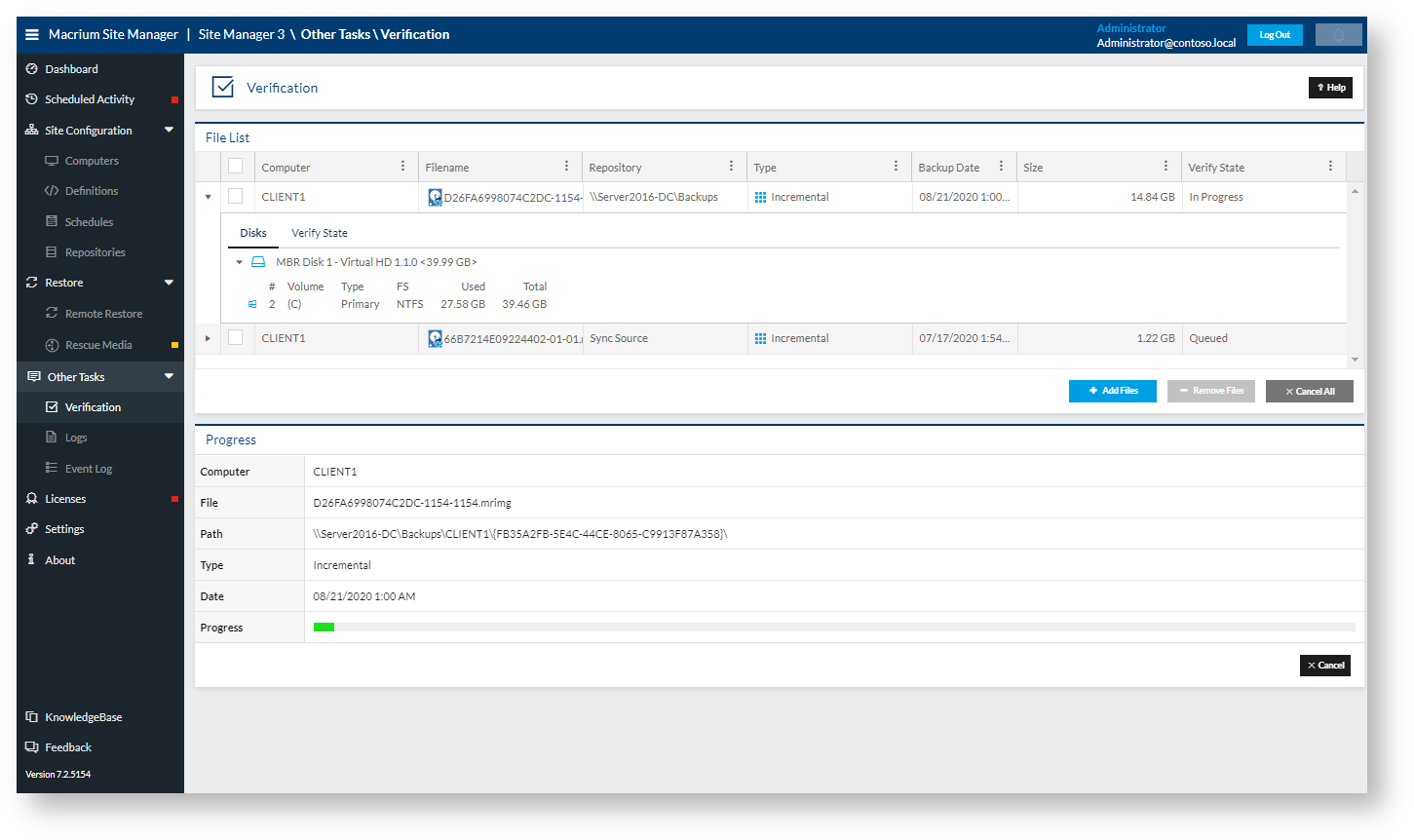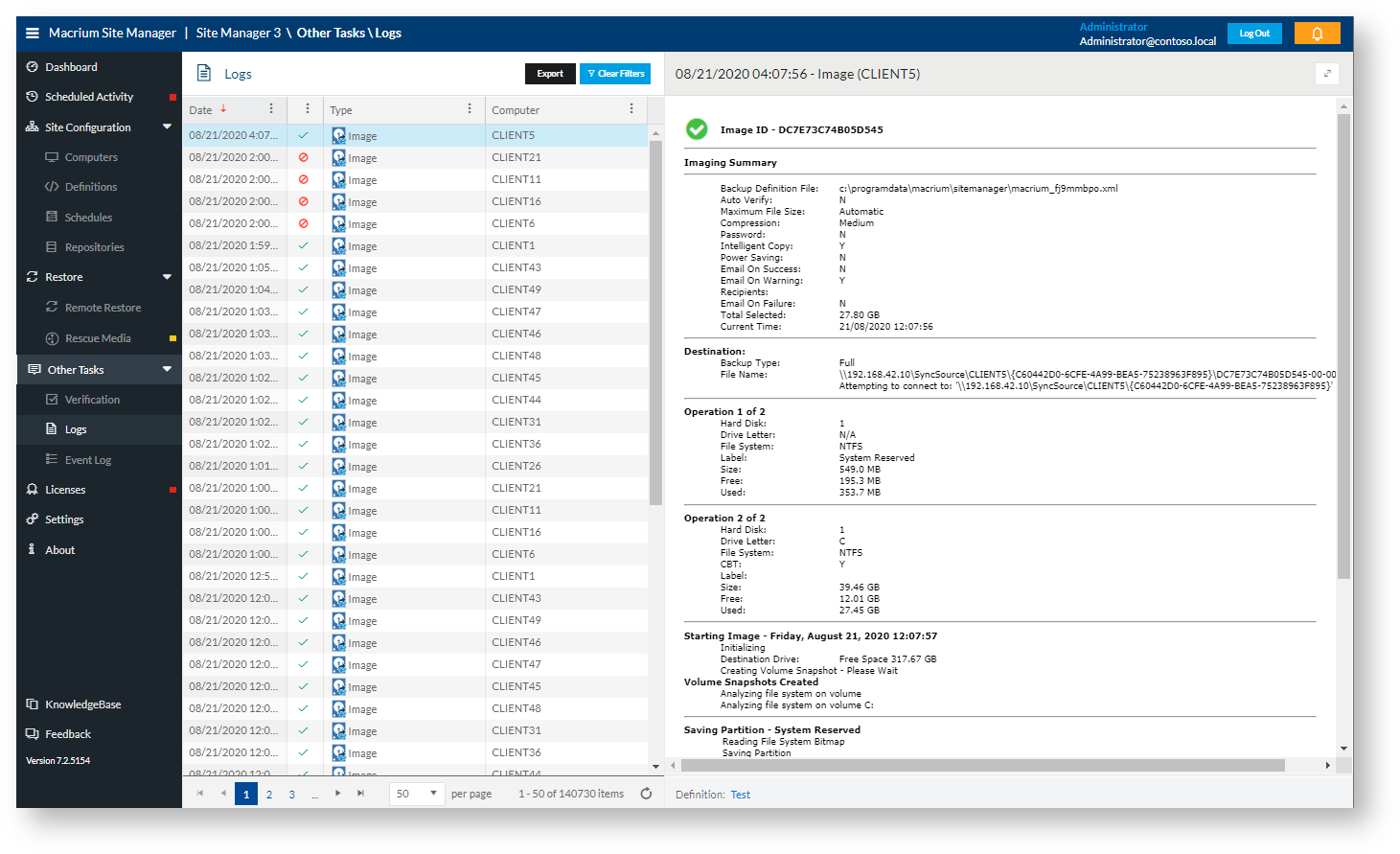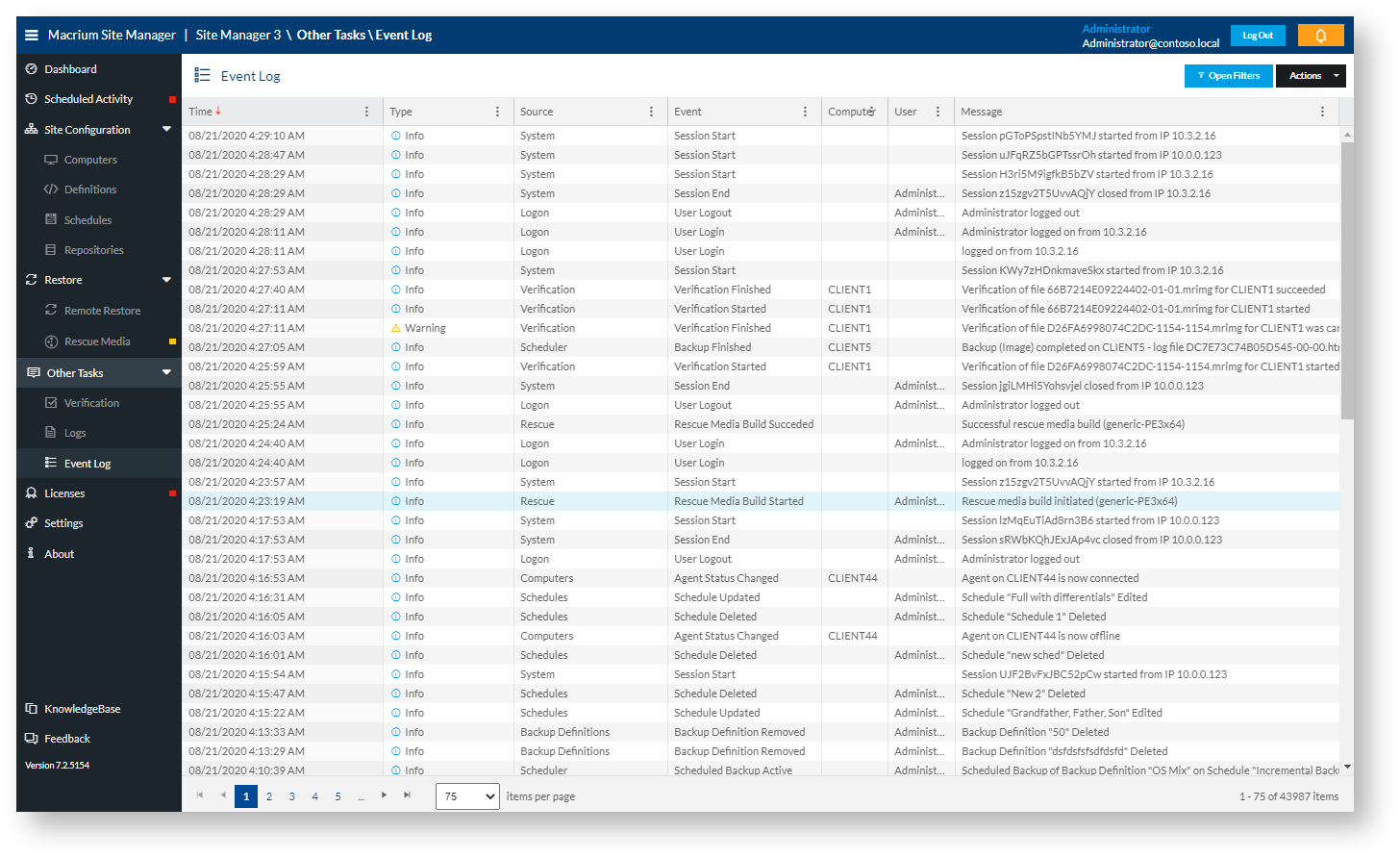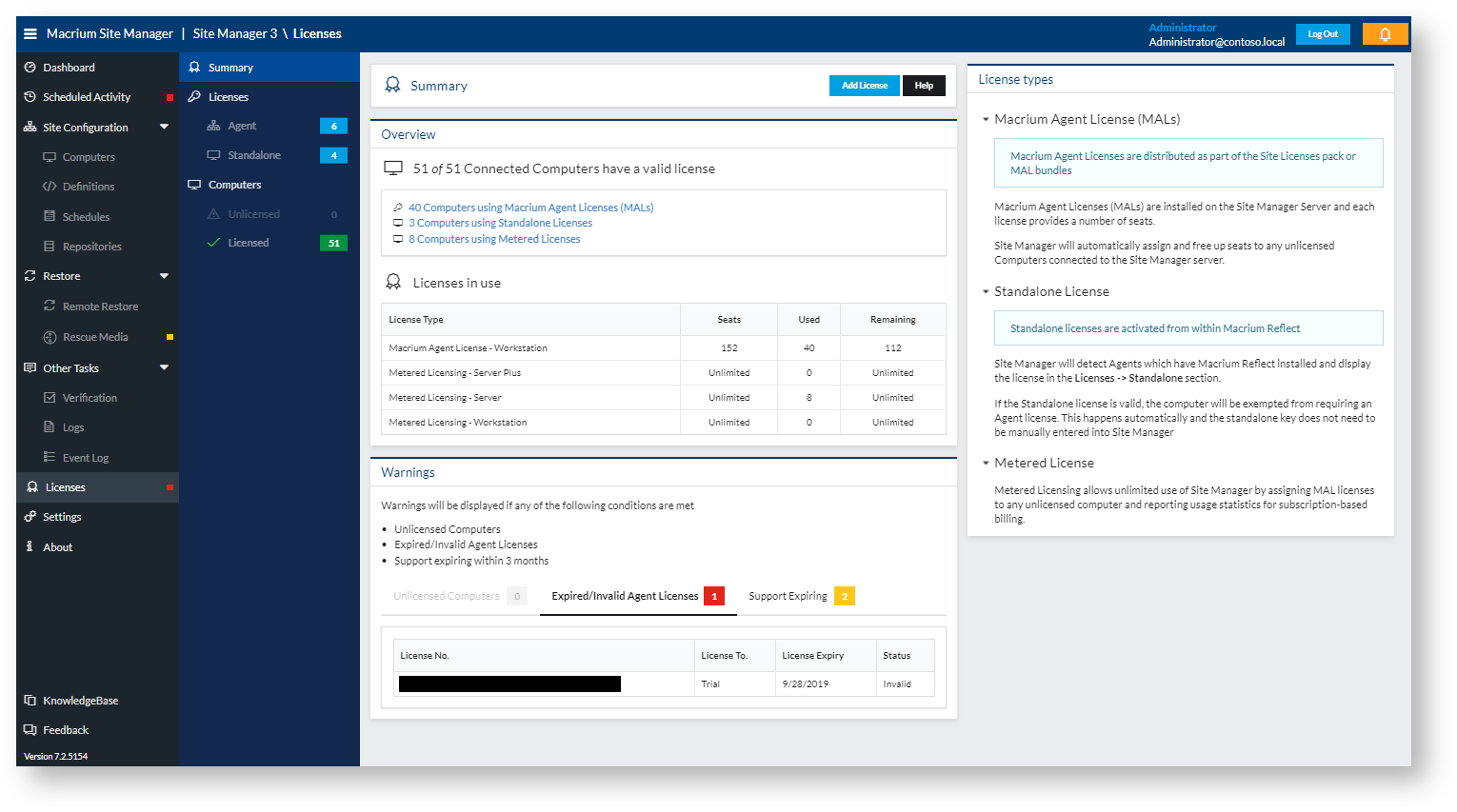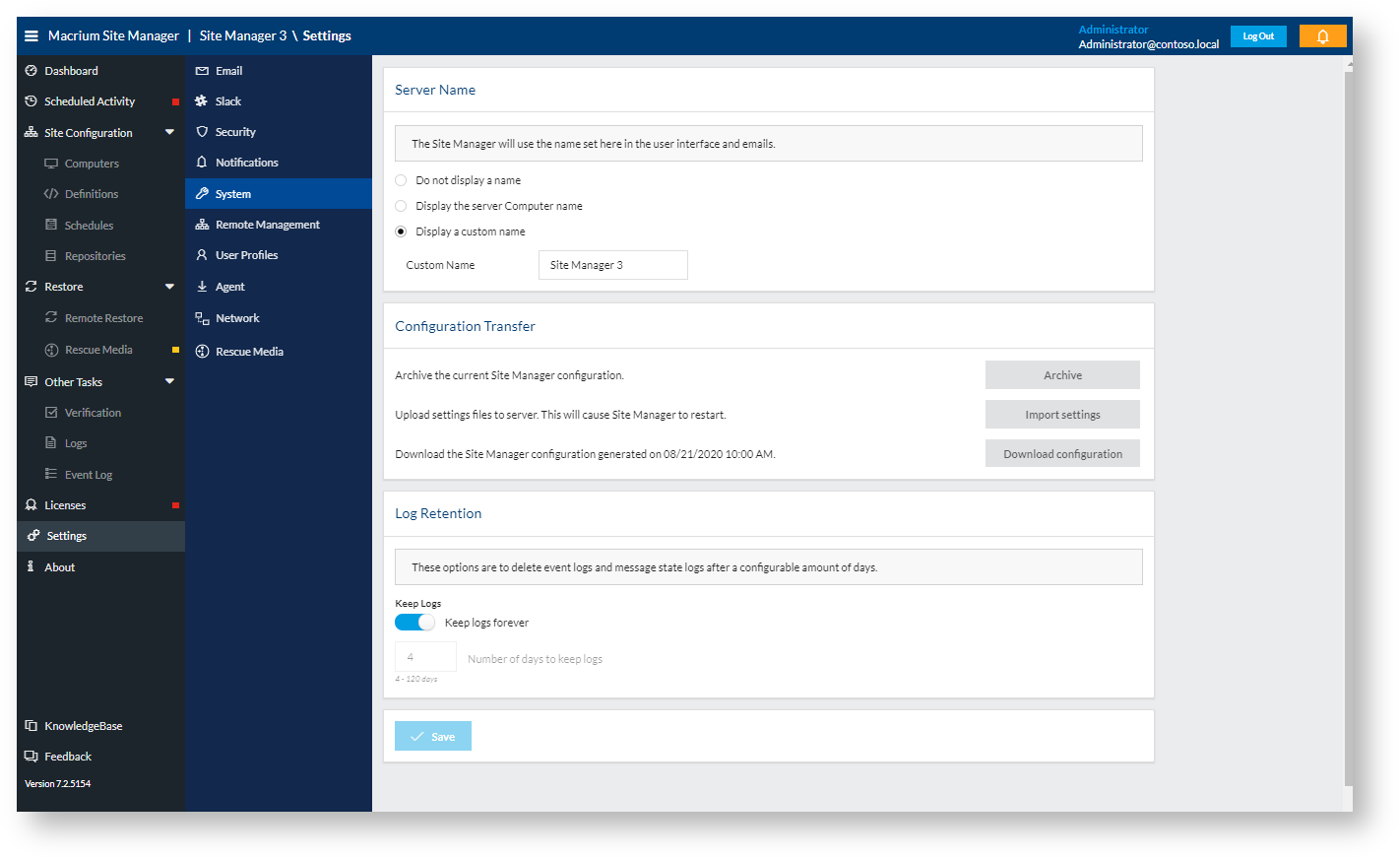Accessing the Site Manager Interface
Once installed, the Site Manager interface is available via web browser. Chrome, Firefox, Edge and Internet Explorer 11 are supported. If this is the first time the Site Manager has been run on this computer, the security configuration profile selection screen will be shown. For more details, see Installation and Update.
For the default simple setup profile, the Site Manager is accessible only from the computer it is installed on via http://localhost:2904
In the default secure setup, Site Manager is accessible from https://<IP or DNS name>:2904
Logging In
If Site Manager has been configured to require a login, the following screen will be shown:
Select a login provider to authenticate against its associated authentication resource. Some login providers are created automatically and enable domain and local administrators to login. More information can be in Access Control.
If the Site Manager installation is not configured to require login, the dashboard page is shown instead.
The Dashboard Page
The Dashboard page is shown after login:
The Dashboard page shows a fixed set of warning tiles at the top, to indicate whether there are any items of concern in the Site Manager deployment and a number of different widgets to monitor the status of the Site Manager and connected computers. The overall layout of widgets and the configuration of each widget is stored on a per-user basis, so different users can set up their Dashboards in different ways.
The warning tiles are:
| Warning Tile | Description |
|---|---|
| Computers backed up | Number of computers which have a recent backup and where the last backup was successful. |
| Last backup failed | Number of computers where the last backup failed. |
| Repository errors | Number of repositories which are in an error state. |
| Unscheduled computers | Number of computers which are not part of a scheduled backup and do not have a locally scheduled backup in Macrium Reflect. |
| Disconnected computers | Number of computers which have been added to Site Manager but which are not currently connected. |
| Unlicensed computers | Number of computers which cannot backup because they don't have a valid license (either a standalone Reflect license or a server-assigned Agent license) |
To edit the widget layout, click on the Edit Dashboard button on the top right of the screen. The Dashboard will enter edit mode:
The top bar allows new widgets to be added to the Dashboard - clicking a button will add a widget to the Dashboard below the existing widgets. Multiple widgets of the same type may be added (e.g. adding two Repository Disk Usage widgets to show disk usage on two different repositories). The configuration may also be saved or changes discarded here.
Below this, individual warning tiles may be turned on or off.
In the large Dashboard area, the currently enabled widgets can be moved by dragging them, resized by dragging the resize handle on the bottom right or deleted by using the delete button on the top right.
The available widgets are:
Widget Name | Description |
|---|---|
| Forecast | An overview of any upcoming backups - may be configured to show different repositories or time periods |
| Activity | Progress bars and information for any currently backing-up computers. |
| Computers | Overview of the status of computers currently being managed, and their connection status. |
| Image Status | A bar chart of image results for a chosen time period. |
| Notifications | The events and notifications which have been generated by the management server, with tools to filter and delete them. |
| Repository Disk Usage | The free and used space on a repository, shown in pie chart format. |
| Unprotected Computers | Warnings about computers with failed backups. |
Setup Pages
These pages are grouped under the 'Setup' heading in Site Manager and contain all the setup and configuration steps for Scheduling Centrally Managed Backups.
Computers
The Computers page manages the connected client computers of the Management Console and provides tools to add, remove and configure them.
Backup Definitions
The Backup Definitions page contains definitions of what and how computers should be backed up. These definitions can be run manually or scheduled to run automatically:
Schedules
Schedules describe when backups should be run and the rules behind retention of backups.
Repositories
Repositories are locations which backup data is saved and managed. The repositories page can be used to create, manage and browse the contents of repositories.
Scheduled Activity
The scheduled activity page controls all regularly scheduled backups and remote syncs defined by the other setup pages. This page can be used to schedule a backup definition to backup to a repository according to a schedule.
Restore
Remote Restore
The Restore page allows image stored in repositories to be remotely restored onto a managed computer in a simple manner. See Restoring an Image through Site Manager for details.
Rescue Media
This page is used to create and manage rescue media for disaster recovery. See Rescue Media for more information.
Other Tasks
These pages contain functions outside of setting up automated backups, restoring images or configuring Site Manager.
The Verification Page
This page is used to verify the integrity of any backup images stored in your repositories. See Verifying Backups for more information.
The View Logs Page
The View Logs page is used to review backup history and gives access to all backup logs on connected computers. For more detailed information see Reviewing Backup Logs.
The View Event Log Page
The event log contains a log of all the actions that have been taken in Site Manager and can be used to help review activity and audit the system. See Reviewing Event Logs for more details.
The Licenses Page
The Licenses page is used to display license information for connected clients and allow management of Macrium Agent Licenses to enable clients without standalone Macrium Reflect installed to be licensed and managed. See Licensing for more details.
The Settings Page
The Settings page contains settings for security, third-party integration and controls for features such as notifications. See Configuration and Security for more information.
